-
 Bitcoin
Bitcoin $82,014.1421
-1.19% -
 Ethereum
Ethereum $1,803.7058
-1.41% -
 Tether USDt
Tether USDt $1.0001
0.03% -
 XRP
XRP $2.0593
-4.88% -
 BNB
BNB $593.0661
-2.05% -
 Solana
Solana $123.6461
-1.13% -
 USDC
USDC $1.0001
0.00% -
 Dogecoin
Dogecoin $0.1628
-4.07% -
 Cardano
Cardano $0.6393
-5.58% -
 TRON
TRON $0.2331
1.13% -
 Toncoin
Toncoin $3.9040
2.39% -
 Chainlink
Chainlink $13.1480
-4.09% -
 UNUS SED LEO
UNUS SED LEO $9.1039
-5.83% -
 Stellar
Stellar $0.2629
-2.34% -
 Avalanche
Avalanche $18.5339
-3.93% -
 Shiba Inu
Shiba Inu $0.0...01210
-4.08% -
 Sui
Sui $2.2086
-7.00% -
 Hedera
Hedera $0.1579
-7.91% -
 Polkadot
Polkadot $4.0066
-2.36% -
 Litecoin
Litecoin $81.8554
-4.81% -
 MANTRA
MANTRA $6.2317
-2.46% -
 Bitcoin Cash
Bitcoin Cash $297.1179
-3.10% -
 Dai
Dai $1.0000
0.01% -
 Bitget Token
Bitget Token $4.4309
-4.80% -
 Ethena USDe
Ethena USDe $0.9999
0.00% -
 Pi
Pi $0.6964
-9.25% -
 Hyperliquid
Hyperliquid $12.7116
1.48% -
 Monero
Monero $215.2306
-0.46% -
 Uniswap
Uniswap $5.8415
-2.23% -
 Aptos
Aptos $5.1747
-2.52%
Why did my mining income suddenly drop significantly?
Cryptocurrency mining income can drop due to price changes, increased difficulty, lower hash rates, poor pool performance, higher electricity costs, hardware issues, or software updates.
Mar 29, 2025 at 01:29 am
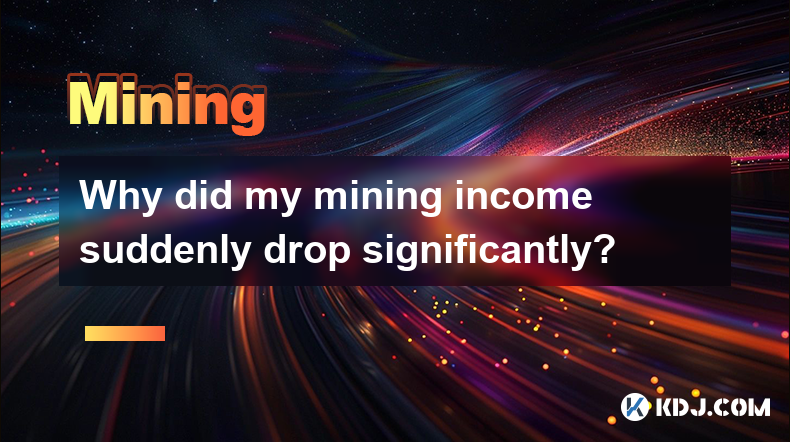
Factors Affecting Cryptocurrency Mining Income
Cryptocurrency mining profitability is a dynamic landscape, influenced by numerous interconnected factors. A sudden and significant drop in your mining income can be attributed to one or more of these elements. Understanding these factors is crucial to troubleshooting the issue and potentially restoring profitability.
Firstly, the most significant factor is the cryptocurrency's price. A decrease in the price of the cryptocurrency you're mining directly translates to a reduction in your earnings, even if your hash rate remains constant. A 50% price drop will, all else being equal, halve your income. Monitoring the market price is therefore essential.
Secondly, mining difficulty plays a crucial role. As more miners join the network, the difficulty of solving cryptographic puzzles increases. This means that it takes more computational power to mine a block, leading to fewer rewards per unit of time. A sudden surge in miners, perhaps due to a price increase or new hardware releases, can significantly impact your income.
Thirdly, hash rate is a key performance indicator for your mining operation. A decrease in your hash rate, caused by hardware malfunction, overheating, or power supply issues, directly impacts your ability to compete for block rewards. Regular monitoring and maintenance of your mining equipment are essential to maintain optimal hash rate.
Fourthly, pool performance matters significantly. If you are mining in a pool, the pool's efficiency and luck directly affect your payouts. A poorly performing pool might distribute fewer rewards than expected, impacting your overall income. Choosing a reliable and efficient pool is a vital consideration.
Fifthly, electricity costs can drastically affect profitability. A sudden increase in electricity prices, perhaps due to seasonal changes or tariff adjustments, can erode your mining profits. Managing energy consumption and exploring cost-effective power solutions are critical for long-term sustainability.
Sixthly, hardware issues can cause significant drops in income. Overheating, component failure, or even simple dust accumulation can reduce your hash rate and, consequently, your earnings. Regular maintenance, including cleaning and temperature monitoring, is crucial for optimal performance.
Seventhly, software updates and configurations are often overlooked. Outdated mining software or incorrect configuration settings can lead to reduced efficiency and lower income. Keeping your software updated and correctly configured is vital for maximizing profitability.
Finally, network changes or protocol upgrades can also affect mining income. Hard forks or other network adjustments can alter block rewards or mining algorithms, potentially impacting your profitability. Staying informed about network developments is crucial.
Troubleshooting Low Mining Income
To diagnose the cause of your decreased mining income, consider these steps:
- Check the current market price of the cryptocurrency: Is the price significantly lower than when your income was higher?
- Monitor your hash rate: Has your hash rate decreased? Check your mining hardware for any issues.
- Review your pool's performance: Is your chosen pool experiencing lower-than-average payouts?
- Analyze your electricity costs: Have your electricity prices increased recently?
- Inspect your mining equipment: Are there any signs of hardware malfunction or overheating?
- Verify your mining software and configuration: Ensure your software is up-to-date and correctly configured.
- Research any recent network changes or protocol upgrades: Check for any updates that might affect mining rewards.
Common Questions and Answers
Q: My mining income dropped suddenly. What's the first thing I should check?
A: The first thing to check is the current market price of the cryptocurrency you are mining. A price drop will directly impact your earnings, regardless of other factors.
Q: My hash rate is stable, but my income is still down. What could be the problem?
A: Even with a stable hash rate, several factors can contribute to lower income. These include increased mining difficulty, changes in pool performance, or increases in electricity costs. Investigate each of these possibilities.
Q: I'm using a mining pool. How can I ensure it's performing well?
A: Research the pool's reputation and historical performance. Look for transparency in payout statistics and a history of reliable payouts. Consider diversifying across multiple pools to mitigate risk.
Q: How can I reduce my electricity costs for mining?
A: Explore options like off-peak electricity plans, energy-efficient mining hardware, and potentially relocating to areas with lower electricity costs.
Q: My mining hardware seems to be overheating. What should I do?
A: Ensure adequate ventilation, consider using cooling solutions like fans or liquid cooling, and monitor temperatures regularly. Overheating can significantly reduce hash rate and damage your hardware.
Q: What is the impact of mining difficulty on my income?
A: Increased mining difficulty means it takes more computational power to mine a block, resulting in fewer rewards per unit of time for each miner. This directly reduces your income unless your hash rate increases proportionally.
Q: How often should I update my mining software?
A: Regularly check for updates to your mining software. Outdated software can have bugs, security vulnerabilities, and reduced efficiency, impacting your profitability. Follow the release notes of your specific mining software for recommended update frequency.
Q: Are there any other factors that can influence my mining income?
A: Yes, unforeseen events like network attacks, regulatory changes, or unexpected protocol upgrades can all significantly affect mining profitability. Staying informed about the cryptocurrency ecosystem is essential.
Disclaimer:info@kdj.com
The information provided is not trading advice. kdj.com does not assume any responsibility for any investments made based on the information provided in this article. Cryptocurrencies are highly volatile and it is highly recommended that you invest with caution after thorough research!
If you believe that the content used on this website infringes your copyright, please contact us immediately (info@kdj.com) and we will delete it promptly.
- CZ Announces Plan to Donate 500 BNB Each to Myanmar and Thailand
- 2025-03-31 20:00:12
- Bitcoin (BTC -2.46%) has earned a place in almost every investor's portfolio.
- 2025-03-31 20:00:12
- Bitcoin (BTC) ETF Witnessed a Major Shift as Investors Pulled out $93 Million
- 2025-03-31 19:55:12
- Nigeria Accuses Binance of Facilitating Terrorism and Kidnapping Financing
- 2025-03-31 19:55:12
- A Sentiment Shift Appears Underway Within the XRP Community
- 2025-03-31 19:50:12
- A Quarter of S&P 500 Firms Could Be Holding Bitcoin on Their Balance Sheets by 2030: Report
- 2025-03-31 19:50:12
Related knowledge
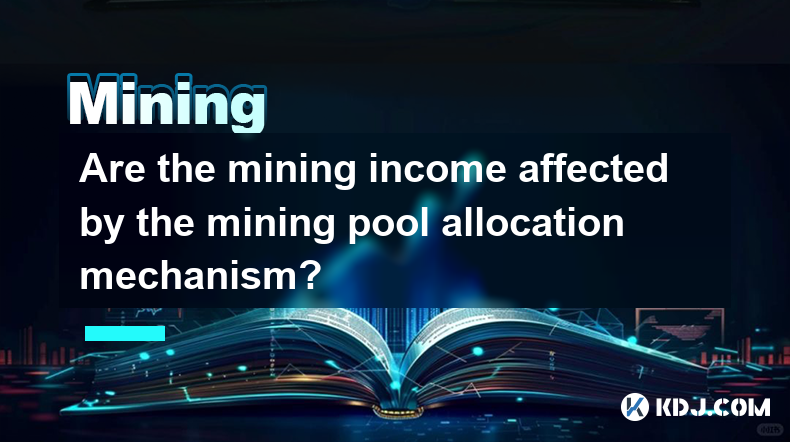
Are the mining income affected by the mining pool allocation mechanism?
Mar 31,2025 at 05:49pm
Understanding Mining Pool Allocation MechanismsMining pools aggregate the hashing power of many miners to increase the chances of successfully mining a block. The reward for successfully mining a block is then distributed among the pool's participants based on their contribution – usually measured in shares submitted. The allocation mechanism determine...

Why is mining algorithm more suitable for graphics card processing?
Mar 31,2025 at 05:28pm
The Parallel Processing Power of GPUs in Cryptocurrency MiningThe core reason why many cryptocurrency mining algorithms are more suitable for graphics card (GPU) processing lies in their inherent architecture. GPUs are designed for parallel processing, handling many calculations simultaneously. This contrasts with CPUs, which excel at sequential proces...
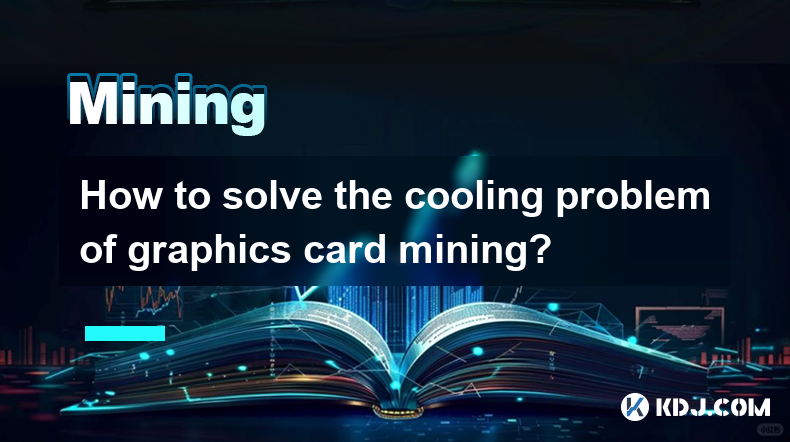
How to solve the cooling problem of graphics card mining?
Mar 31,2025 at 02:35pm
Understanding GPU Cooling in Cryptocurrency MiningGraphics cards (GPUs) generate significant heat during cryptocurrency mining, demanding efficient cooling solutions to prevent damage and maintain optimal performance. Overheating can lead to reduced hash rates, instability, and even permanent hardware failure. This necessitates a proactive approach to ...
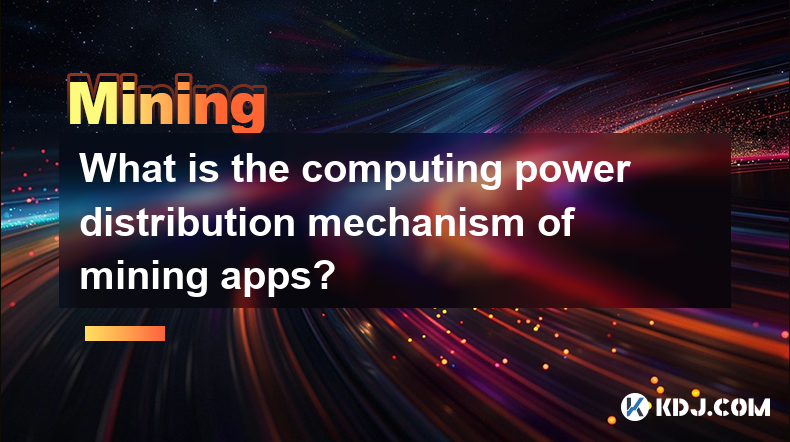
What is the computing power distribution mechanism of mining apps?
Mar 31,2025 at 03:56pm
Understanding Hashrate Distribution in Mining AppsMining apps, used to participate in the Proof-of-Work (PoW) consensus mechanism of cryptocurrencies like Bitcoin, rely on a distributed network of miners contributing computing power. This power, measured in hashes per second (hashrate), isn't evenly distributed. Understanding how it's allocated is cruc...
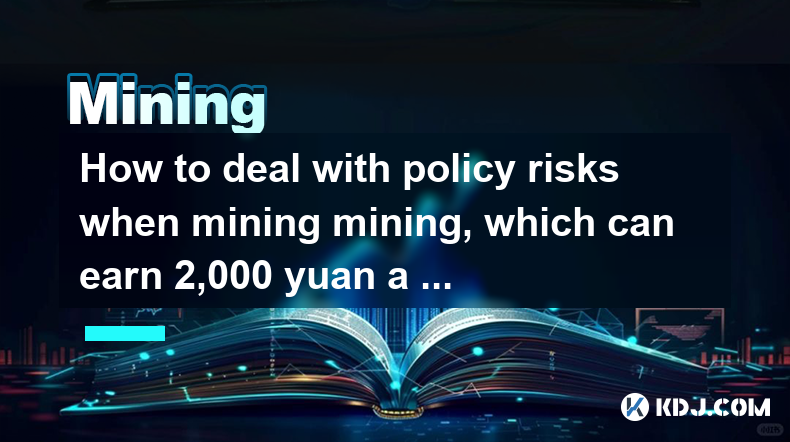
How to deal with policy risks when mining mining, which can earn 2,000 yuan a day?
Mar 31,2025 at 05:00pm
How to Deal with Policy Risks When Mining, Aiming for 2,000 Yuan Daily Profit? Understanding the Volatility of Cryptocurrency MiningMining cryptocurrencies, with the goal of a 2,000 yuan daily profit, is incredibly ambitious and inherently risky. This ambition hinges heavily on several factors, including the chosen cryptocurrency, the hash rate of your ...
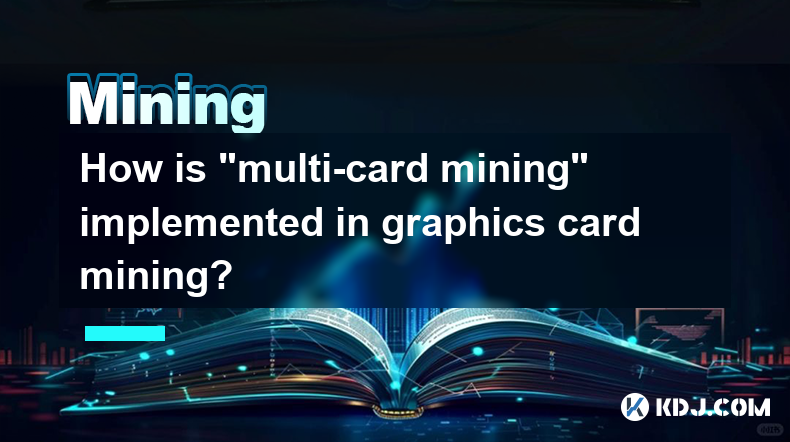
How is "multi-card mining" implemented in graphics card mining?
Mar 31,2025 at 07:49pm
Understanding Multi-Card Mining SetupMulti-card mining, in the context of cryptocurrency mining using graphics cards (GPUs), refers to the practice of using multiple GPUs simultaneously to increase the overall hashing power and thus, the chances of successfully mining a block and earning cryptocurrency rewards. This is significantly more efficient than...

Are the mining income affected by the mining pool allocation mechanism?
Mar 31,2025 at 05:49pm
Understanding Mining Pool Allocation MechanismsMining pools aggregate the hashing power of many miners to increase the chances of successfully mining a block. The reward for successfully mining a block is then distributed among the pool's participants based on their contribution – usually measured in shares submitted. The allocation mechanism determine...

Why is mining algorithm more suitable for graphics card processing?
Mar 31,2025 at 05:28pm
The Parallel Processing Power of GPUs in Cryptocurrency MiningThe core reason why many cryptocurrency mining algorithms are more suitable for graphics card (GPU) processing lies in their inherent architecture. GPUs are designed for parallel processing, handling many calculations simultaneously. This contrasts with CPUs, which excel at sequential proces...

How to solve the cooling problem of graphics card mining?
Mar 31,2025 at 02:35pm
Understanding GPU Cooling in Cryptocurrency MiningGraphics cards (GPUs) generate significant heat during cryptocurrency mining, demanding efficient cooling solutions to prevent damage and maintain optimal performance. Overheating can lead to reduced hash rates, instability, and even permanent hardware failure. This necessitates a proactive approach to ...

What is the computing power distribution mechanism of mining apps?
Mar 31,2025 at 03:56pm
Understanding Hashrate Distribution in Mining AppsMining apps, used to participate in the Proof-of-Work (PoW) consensus mechanism of cryptocurrencies like Bitcoin, rely on a distributed network of miners contributing computing power. This power, measured in hashes per second (hashrate), isn't evenly distributed. Understanding how it's allocated is cruc...

How to deal with policy risks when mining mining, which can earn 2,000 yuan a day?
Mar 31,2025 at 05:00pm
How to Deal with Policy Risks When Mining, Aiming for 2,000 Yuan Daily Profit? Understanding the Volatility of Cryptocurrency MiningMining cryptocurrencies, with the goal of a 2,000 yuan daily profit, is incredibly ambitious and inherently risky. This ambition hinges heavily on several factors, including the chosen cryptocurrency, the hash rate of your ...

How is "multi-card mining" implemented in graphics card mining?
Mar 31,2025 at 07:49pm
Understanding Multi-Card Mining SetupMulti-card mining, in the context of cryptocurrency mining using graphics cards (GPUs), refers to the practice of using multiple GPUs simultaneously to increase the overall hashing power and thus, the chances of successfully mining a block and earning cryptocurrency rewards. This is significantly more efficient than...
See all articles






















































































